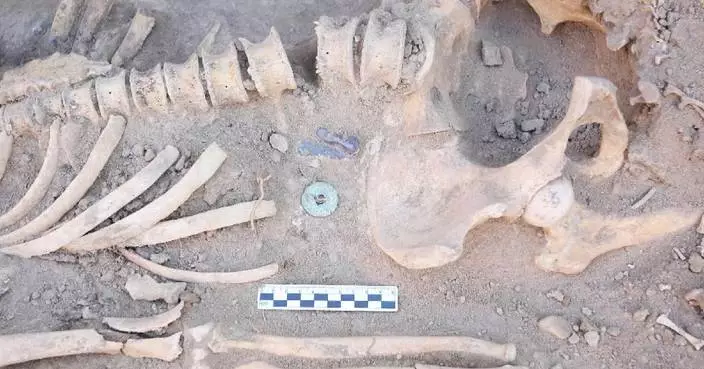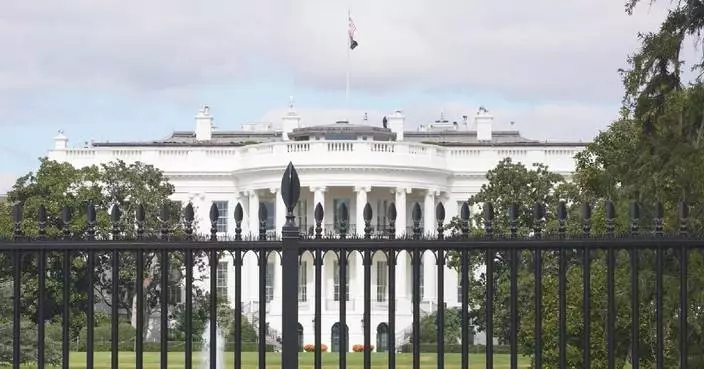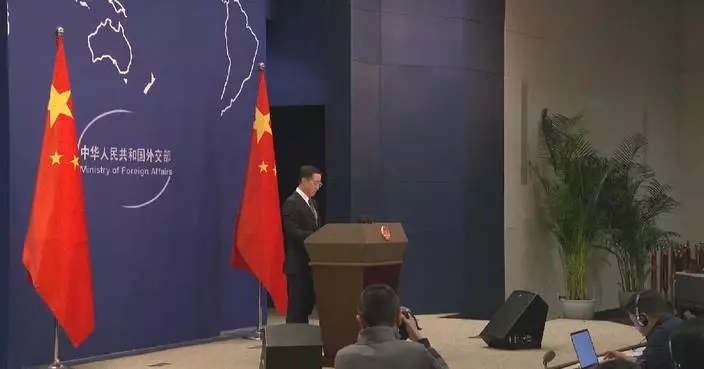China's BeiDou Navigation Satellite System (BDS) has seen thriving applications at home and abroad across a wide range of fields, making unremitting Chinese contribution to the progress of human society.
China launched the two final backup satellites of BeiDou-3 navigation system on Thursday morning, enhancing its stability and laying foundation for the next-generation navigation system.
These latest satellites, the 59th and 60th in the series launched from the Xichang Satellite Launch Center in southwest China's Sichuan Province, were elevated into the skies by a Long March-3B carrier rocket, marking a significant step in China's advancement of its homegrown satellite navigation system.
Nowadays, BDS has become a strong support for efficient operations of such sectors as transportation, public security, disaster relief and reduction.
"Our BDS has basically achieved the industrialized development. We have achieved lane-level navigation, which ensures driving safety and provides convenience for users. The applications of precision agriculture, such as unmanned harvesting, all make use of our BDS, which has produced very good benefits. At the same time, it has also entered large numbers of families, providing various services for the mass consumption," said Yang Changfeng, chief designer of the BDS.
According to statistics, as of 2023, there were more than 7.9 million road vehicles, more than 47,000 ships, and more than 40,000 postal and express delivery vehicles using the BDS, and nearly 8,000 BDS terminals of various models were used in the railway field.
There were more than 100,000 agricultural machines installed with BDS-powered autonomous driving system by 2023. More than 5 million shared bicycles equipped with domestic BDS high-precision positioning chips have been deployed, covering over 450 cities across the country.
Meanwhile, the BDS is gaining traction among global consumers, with the technology and its applications having stood the test of time.
China also plans to expand the application of BeiDou to emerging areas such as industrial internet, the Internet of Things (IoT) and the Internet of Vehicles (IoV), while continuing to use the technology to empower the transformation of traditional industries.
Initiated in 1994, BDS is a global navigation satellite system constructed and operated independently by China.
The construction of BDS-1 and BDS-2 was completed in 2000 and 2012, respectively. When BDS-3 was completed and put into service on July 31, 2020, China became the third country to have an independent global navigation satellite system.

China's BDS sees rapid applications across various sectors
Macao has been emerging as a global hub for conventions and exhibitions in recent years by exploring the enormous opportunities in the sector, driving the region to advance its economic diversification and embrace a brighter future.
Macao has received many awards this year, such as the Best Convention City (Asia) and the Best BT-MICE City, showcasing the recognition for and influence of Macao's exhibition industry.
More than 1,000 electronic game enthusiasts from all over the world gathered recently in Macao to participate in a esports themed event.
Su Zhili, organizer of the event, said that Macao's rich experience in hosting large-scale events, coupled with its good infrastructure, has driven him to choose the region as an ideal destination to hold such an activity.
"Macao has held many similar large-scale events. It has rich experience, and the facilities at the venue are relatively mature, so we can start our work comfortably," said Su.
During the first three quarters of 2024, Macao held more than 1,000 conferences and exhibitions in total.
"We will invite more professional, special conferences to be held in Macao and also cultivate more exhibition brands with international influence in Macao, so as to promote Macao's exhibitions to be more market-oriented, professional, international, digital and greener from various aspects. This is our goal," said Elaine Wong, member of the Macao Commerce and Investment Promotion Institute.
In addition, multiple large exhibitions and conferences, such as the Macao International Trade and Investment fair, the Macao Franchise Expo, and the International Infrastructure Investment and Construction Forum, are held regularly in Macao.
With the introduction of a series of policies and measures to facilitate the exchanges between the mainland and Macao, as well as the construction and development of the Guangdong-Hong Kong-Macao Greater Bay Area and the Guangdong-Macao In-Depth Cooperation Zone in Hengqin, Macao's convention and exhibition industry will embrace more opportunities for development in the foreseeable future.
"We have such a good industrial base in the Greater Bay Area. The mode of 'Convention and Exhibition + Industry' not only integrates the industries of Macao, but also the industries of the Greater Bay Area. In addition, Macao actively integrates into the national development and plays a role in the Belt and Road. Why are we so confident in Macao's convention and exhibition sector? Because it is backed by the motherland, and the country gives Macao great support," said Alan Ho, chairman of the Macao Association of Convention, Exhibition and Tourism Sectors.

Macao emerges as global hub for conventions and exhibitions, driving economic diversification and international recognition










